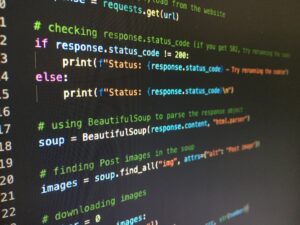As Python grows in popularity for personal and enterprise projects, application security has never been more critical. While Python's flexibility and extensive libraries speed development, they can also introduce vulnerabilities if not properly handled. In this article, we'll explore several security risks and some essential best practices Python developers should adopt to help strengthen their code.
Risks
The following are the common risks that can arise when developing software applications and systems using Python.
1. Input Validation Failures
Command injection and SQL injection are common input validation failures. In both cases, the user input is not filtered correctly and is directly passed to standard Python functions that run OS commands. This allows remote attackers to run arbitrary commands on the vulnerable system.
2. Exposed Debug Info
Debug logs are helpful for developers as they use detailed debug logs in the development environment to troubleshoot problems. But, these debug logs present security risks if exposed publicly. This can happen when the production systems do not have environmental isolation from the developmental environments. When detailed Python error messages and debugging output is available publicly, it aids the hackers in compromising applications.
3. Web Application Vulnerability
Directory traversal is a type of web application vulnerability. In directory traversal, a web app processes file paths without validation. This lets attackers access files outside the intended scope by manipulating file requests. They could retrieve password files or execute remote code through a vulnerable traversal implementation.
4. Outdated Dependencies
Many software projects rely on third-party libraries and modules (dependencies). When a code base relies on dependency, it imports and reuses functions, classes, variables, and other code provided in that third-party library or module. However, dependencies can also introduce vulnerabilities if not properly maintained. Outdated packages may contain unpatched security flaws that could be exploited.
5. Compromised Temporary Files
The mktemp() function allows conveniently generating temporary random filenames in Python. But randomly generated names can accidentally overwrite existing files with the same name. This results in attackers manipulating this behavior to access sensitive temp data, compromising data protection.
6. Malicious Packages
Package managers streamline development by letting you install external code easily. However, this convenience comes with risks if packages aren't vetted. Malicious actors could publish packages containing exploits on indexes, or package names could be deceptively similar to trick users.
Best Practises
Following are the best practices when developing software applications and systems using Python.
1. Know Your Project Dependencies
When using open-source projects in Python, it's essential to understand the licenses of those dependencies. Familiarize yourself with the license terms to ensure your project remains compliant. Check for restrictive licenses that require sharing changes made to the code. Scanning dependencies regularly is key to maintaining a secure and sustainable codebase.
2. Keep Dependent Libraries Updated
Since Python applications often rely on many third-party libraries. These could contain vulnerabilities, so be sure to use the latest versions. Leverage automated tools that proactively scan for vulnerabilities and open pull requests with suggested dependency updates. Staying on top of library security patches helps fortify your project.
3. Use Linters
Linting tools analytically examine code and flag errors or unusual elements. They help enforce code quality and consistency. Eliminating bugs, unnecessary code, and convoluted patterns through linting makes code more readable, understandable, and secure for all Python developers working on a project. Regular linting is a simple way to catch security slip-ups early.
Endnote
Remember, security is a process, not a product, requiring ongoing diligence. But establishing good coding hygiene, like the techniques discussed here, puts your Python applications in a better position to withstand attack. Overall, when security is considered from the start of development, it need not come at the cost of agility or productivity.

